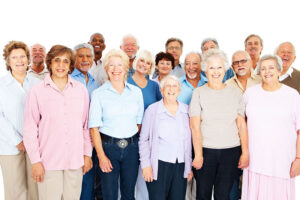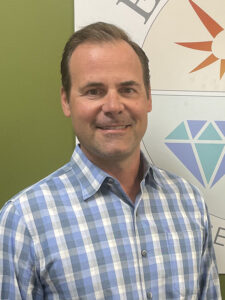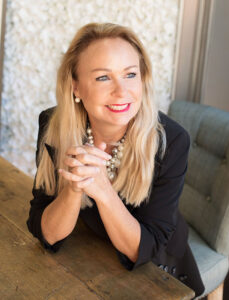Who Will Take Care of Baby Boomers?
The oldest baby boomers are 77, meaning the largest swell of boomers in long-term care is yet to come
By Deborah Jeanne Sergeant
 Upstate New York long-term health care faces an industry-wide disaster like healthcare has never seen before, as nursing homes experience unprecedented staffing shortages, chronic budgetary stagnation and escalating need.
Upstate New York long-term health care faces an industry-wide disaster like healthcare has never seen before, as nursing homes experience unprecedented staffing shortages, chronic budgetary stagnation and escalating need.
The oldest baby boomers are 77, meaning the largest swell of boomers in long-term care is yet to come.
The average age of a nursing home resident is 81.1. In just a few years, many, many more people will need care in a setting where staffing to meet legislated minimums is already nearly impossible.

Joe Murabito is president and managing member of Elemental Management Group, believes that the answer lies in adequate Medicaid reimbursement for long-term care providers.
“The number one thing lawmakers and legislators must recognize is how critical Medicaid is to Upstate for recruitment and retention,” he said.
Elemental is headquartered in Oswego and manages assisted living facilities, residential care centers and rehabilitation and nursing centers in Monroe, Chemung, Oswego and Oneida counties. He is also a member of the New York Providers Alliance, an organization of 50 for-profit and nonprofit long-term care facilities from Buffalo to Lake Placid.
Murabito said that between 2012 and 2022, Upstate healthcare providers have experienced a 50% to 53% increase in wages for care staff, but Medicaid rates have not moved since 2007, except for a 7.5% increase passed last year.
“We didn’t realize any of that funding until a month ago,” he said. “It was a good thing, but a fraction of what’s necessary to deal with the labor problem, 15 years of no new funding and significant inflation. We must be competitive players in the marketplace and without adequate Medicaid funding we just can’t get there.”
When workers could make similar wages doing work much less emotionally and physically taxing, it becomes very difficult to attract workers.
Especially grating to Murabito is the discrepancy between Upstate and Downstate reimbursement.
He explained that because Upstate relies much more heavily on Medicaid than in New York City, this means that proprietary providers Downstate survive with 8% to 9% profits overall. Although modest, it keeps them going. Similarly, across all payers Upstate proprietary providers lose on average $17 to 18 per patient day, and voluntaries across the entire state lose more than $80 per day: a clearly unsustainable business model, he said.
Most Upstate long-term care providers receive between $180 and $210 per day per resident to provide medical and personal care, housing food, bedding, recreation, housekeeping, laundry services and administrative services. A hotel room alone in Central New York averages about $235 per night.
Coupling these reimbursement levels with the current market and recent staffing mandates is a death knell for many. As a result, long-term care facilities are closing, meaning fewer available places for those needing care.
“Nationwide, there have been more than 500 nursing home closures since 2020 and nearly 40% of them have been operating as four- to five-star facilities,” Murabito said.
Murabito sees increased Medicaid reimbursement as the key to turning Upstate long-term care around. Although technology such as artificial intelligence can help reduce administrative busywork for staff, “you still need people to provide hands-on care for people.”
One good possibility is loosening the administrative burden to sponsor and hire immigrants or refugees like in agriculture to help cover care needs. Murabito recently met with an immigration attorney to try to start the process of bringing nurses from other countries who are willing to work in long-term care. But he views better wages as the ideal solution.
“There are a lot of workers in our own country if we made healthcare more attractive,” he said. “Paying better will help.”
Low Medicaid reimbursement makes it difficult to hire

Kim Townsend, president and CEO at Loretto, also said that low Medicare reimbursement rates have led to the current crisis.
“All of us know that proper staffing leads to high-quality care,” she said. “There’s no doubt about that.”
It’s frustrating to her that therapists providing physical therapy, occupational therapy and speech therapy are integral parts of the caregiving team, but their roles do not count toward the mandatory staffing minimum. Neither do staff engaged in therapeutic recreation, social work, nutrition and dietary, even though all of these workers “are critical to maintaining an individual’s wellbeing within a long-term care facility,” Townsend said.
The low Medicaid reimbursement makes it difficult to hire sufficient clinical staff. Townsend said that since the pandemic’s beginning, 20% or 400,000 frontline caregivers have left long-term care, whether quitting the healthcare field or moving into another healthcare role. When organizations like Townsend’s lack caregiving staff, they have to reduce the number of available beds, which will exacerbate the existing crisis in long-term care when more baby boomers will need care.
“In a highly competitive labor market like what we have here, skilled nursing facilities simply cannot compete on wages,” Townsend said. “That’s leading to a shortage. It’s creating an environment where it’s difficult to attract and retain great employees. It impedes our ability to serve the community and provide discharge plans for hospitals. That’s part of why we don’t have great movement across our regional healthcare system.”
Loretto and many others Upstate senior facilities serve a mostly Medicaid- eligible population. But because costs are so high and reimbursement is so low, these organizations lose about $100 per person, per day. Raising wages further isn’t possible. Townsend said that 78% of nursing homes across Upstate are operating in the red, largely because Medicaid funding has remained stagnant for 15 years.
“We’re constantly assessing the needs of the community and how we can meet those needs,” Townsend said. “It’s a fundamental problem when New York state only pays for 75% for the cost of care for long-term care. There’s no filling that hole except by improving the Medicaid rate over time.”
Volunteer programs helped many organizations like Loretto reduce its labor costs. However, since the pandemic, their numbers have not returned as lingering concerns about COVID-19 continue. Townsend said that many of Loretto’s volunteers are retirees. In addition to those who don’t want to risk exposure, some retirees have returned to work to help their financial situation and are therefore unavailable to volunteer.
Townsend would like to see more grant money allocated to help nurses and other clinical staff pay for their education. She believes that this would incentivize more people to enter these fields.
Making education attainable is one of Loretto’s objectives. Loretto’s LPN apprenticeship program is the first federally accredited apprenticeship program in the US. It enables workers to earn as they learn and eventually become LPNs.
Townsend noted a lack of clinical faculty has made it tougher for people to enter LPN and RN programs.
“If you talk with any nursing schools or Onondaga Community College, finding faculty to teach those clinical programs is a real challenge. I’d suggest not only to provide money to students to be part of that pipeline but it’s also important to incentivize those in the profession today to become faculty members to teach the next generation of caregivers.”
Earning the degree required to instruct is expensive.
Clinical placements are also limited, so students have no place to precept. Townsend said that it’s tough for short-staffed facilities to provide clinical placements.
Family caregivers can help delay the onset for long-term care. However, many families are geographically dispersed and most couples both work. In addition, “Baby boomers are known for being individualistic and don’t necessarily want their children caring for them,” Townsend said. “People are living longer and want to live in their homes longer. They all contribute to an eventual reliance on a system when you can no longer be cared for at home. Whether assisted living or long-term care, most people are far more acute than a generation ago. By the time they go into assisted living or long-term care, they have extraordinary needs. Their families have tried to care for them but they’re acute and need greater services.
“The work we do is sacred because it makes a difference in people’s lives every day. The workers here are the first people they see when they wake up in the morning and may be the last people they see when they pass from this earth.”
Receiving care at home as long as possible is an appealing option for most baby boomers and it saves money compared with long-term care. According to AARP, 87% of those 65 and older want to age in place in their own homes. To help make this a reality, services like Seniors Helping Seniors provide non-medical household help and transportation, such as washing laundry, minor household repairs, taking out trash and driving clients to the grocery store.
“Our whole mission is to keep seniors at home as long as possible, as long as it’s safe,” said co-owner Deb Turner. Based in Oneida, her franchise location serves Oswego, Cayuga, Seneca, and Wayne counties.
Turner said that the rising minimum wage is making it challenging for her to stay in business, as raising her rates prices some older adults out of the market for receiving help at home. Typically, insurance and Medicaid will not cover the costs because it’s not medical care, even though her agency’s services help delay the much more costly care provided in nursing homes and help prevent isolation, poor nutrition, deconditioning and costly health crises like broken hips.
Her rate for care is $33 to $35 per hour with a minimum of two hours per visit.
With fewer volunteer organizations operating, Seniors Helping Seniors and similar agencies provide an essential service to older adults trying to stay at home.
“I think Medicaid or Medicare has to jump in and recognize the non medical in-home agencies,” Turner said. “There’s not a license or certification for non medical care. If the government would recognize our role for that first-level care and give people who are on a lower income some help, it would save the government for paying for that person’s nursing home bill. Most people don’t need a ton of care, just a little in the beginning.”
She said that Medicaid is beginning to provide a certain number of caregiver hours per month, but vetting the caregiver is up to the older adult. Turner said that the process is so complicated and risky that many older adults give up.
By not covering more in-home options, “we are hurting the very people we should care about the most,” Turner said.

